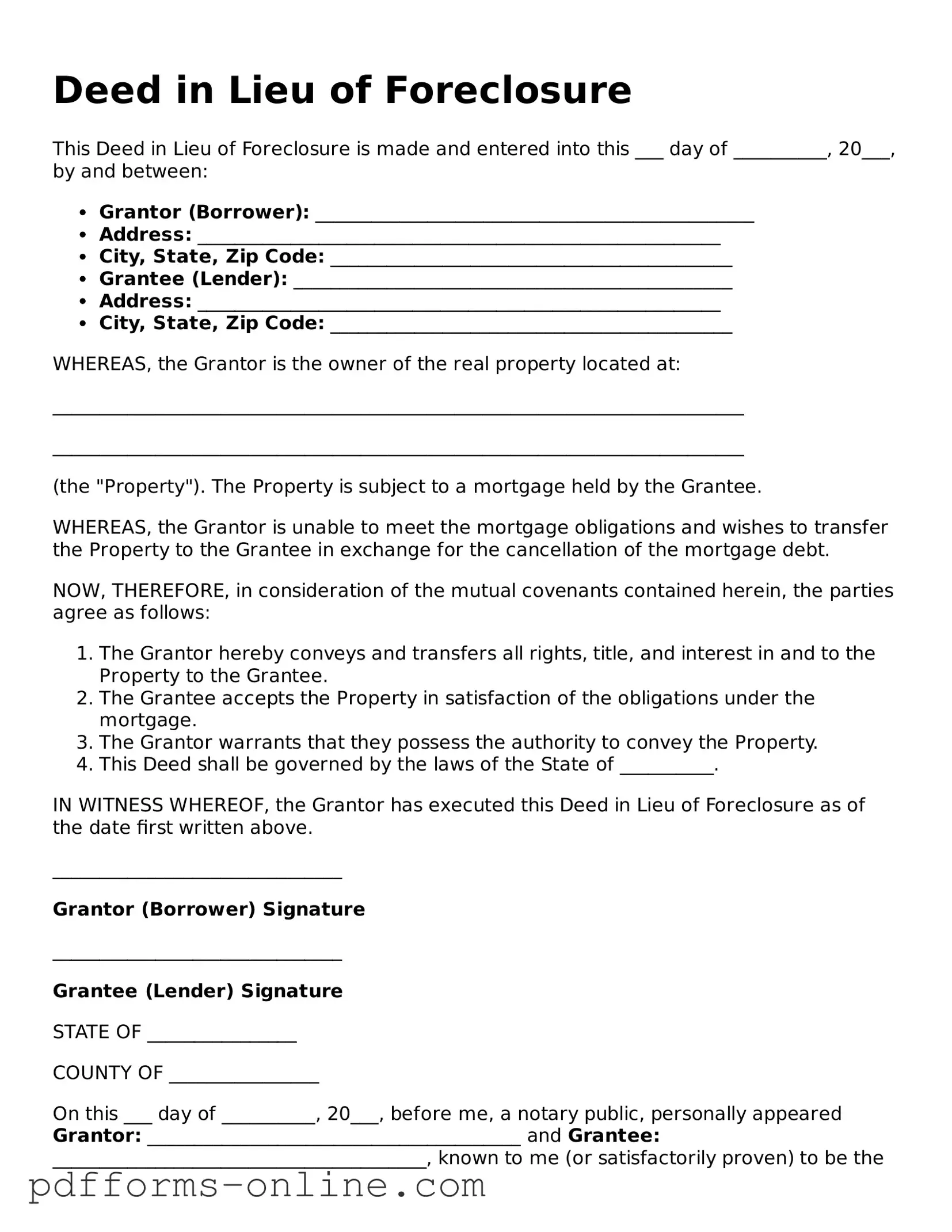Deed in Lieu of Foreclosure
This Deed in Lieu of Foreclosure is made and entered into this ___ day of __________, 20___, by and between:
- Grantor (Borrower): _______________________________________________
- Address: ________________________________________________________
- City, State, Zip Code: ___________________________________________
- Grantee (Lender): _______________________________________________
- Address: ________________________________________________________
- City, State, Zip Code: ___________________________________________
WHEREAS, the Grantor is the owner of the real property located at:
__________________________________________________________________________
__________________________________________________________________________
(the "Property"). The Property is subject to a mortgage held by the Grantee.
WHEREAS, the Grantor is unable to meet the mortgage obligations and wishes to transfer the Property to the Grantee in exchange for the cancellation of the mortgage debt.
NOW, THEREFORE, in consideration of the mutual covenants contained herein, the parties agree as follows:
- The Grantor hereby conveys and transfers all rights, title, and interest in and to the Property to the Grantee.
- The Grantee accepts the Property in satisfaction of the obligations under the mortgage.
- The Grantor warrants that they possess the authority to convey the Property.
- This Deed shall be governed by the laws of the State of __________.
IN WITNESS WHEREOF, the Grantor has executed this Deed in Lieu of Foreclosure as of the date first written above.
_______________________________
Grantor (Borrower) Signature
_______________________________
Grantee (Lender) Signature
STATE OF ________________
COUNTY OF ________________
On this ___ day of __________, 20___, before me, a notary public, personally appeared Grantor: ________________________________________ and Grantee: ________________________________________, known to me (or satisfactorily proven) to be the persons whose names are subscribed to the within instrument, and acknowledged that they executed the same for the purposes therein contained.
In witness whereof, I hereunto set my hand and official seal.
_______________________________
Notary Public Signature
My commission expires: ________________
